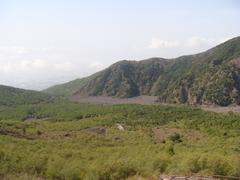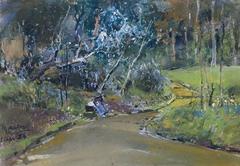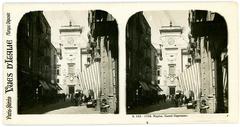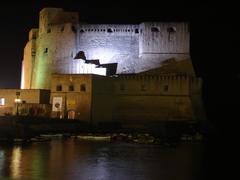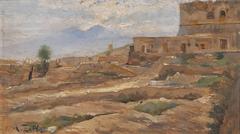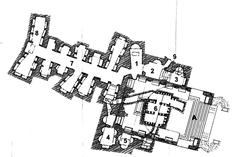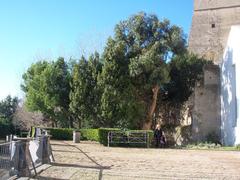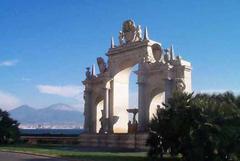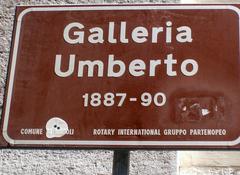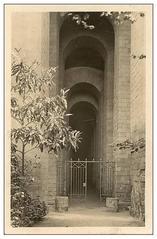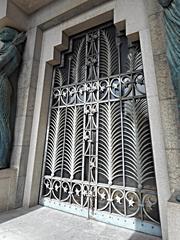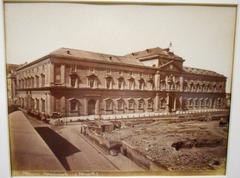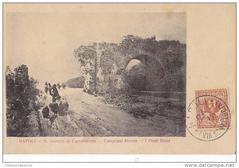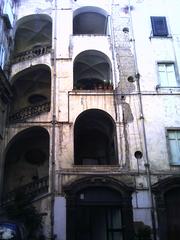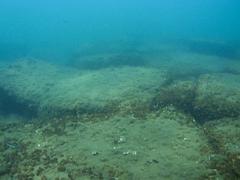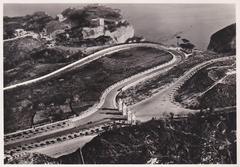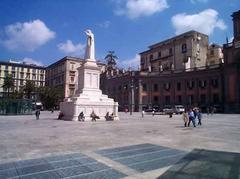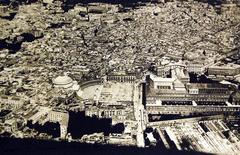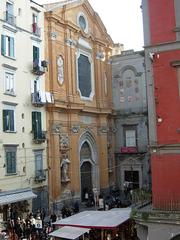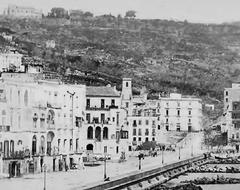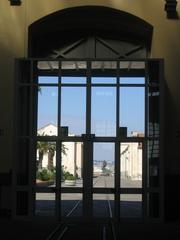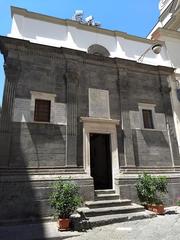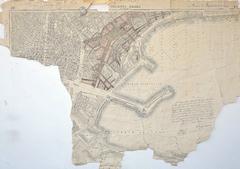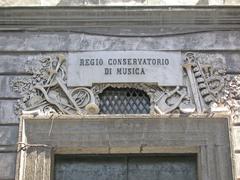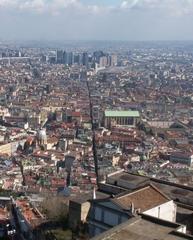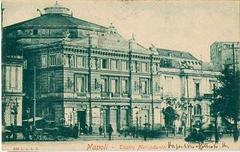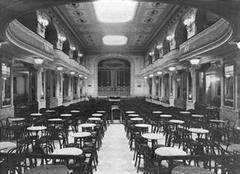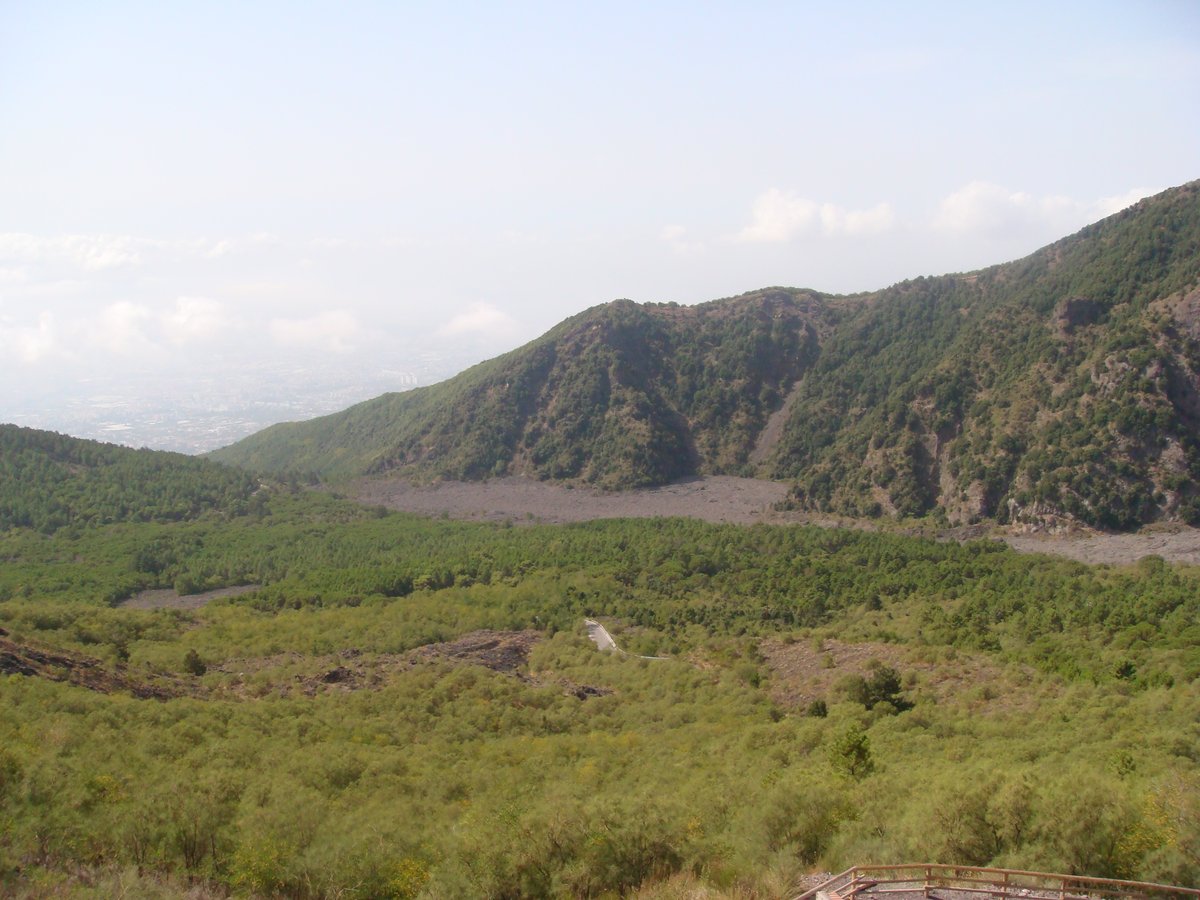
Visiting Vesuvio National Park: Tickets, Hours, and Tips
Date: 17/07/2024
Introduction
Vesuvio National Park, situated near Naples, Italy, is an exceptional destination that blends natural beauty, historical significance, and geological wonders. At its heart lies Mount Vesuvius, one of the world’s most renowned volcanoes, infamous for its catastrophic eruption in 79 AD that obliterated the ancient Roman cities of Pompeii, Herculaneum, Oplontis, and Stabiae. This event, meticulously documented by Pliny the Younger, has provided invaluable insights into the nature of volcanic activity and Roman life (Smithsonian Institution, Pliny the Younger). The park is not only a geological marvel, forming part of the Campanian volcanic arc, but also a cultural treasure trove, offering a well-preserved snapshot of Roman civilization through its archaeological sites, now recognized as UNESCO World Heritage Sites (UNESCO). Visitors to Vesuvio National Park can immerse themselves in a rich tapestry of history and nature, from exploring the park’s extensive hiking trails and the awe-inspiring crater of Mount Vesuvius to delving into the ancient ruins of Pompeii and Herculaneum. This comprehensive guide aims to equip you with all the necessary information, including visiting hours, ticket prices, travel tips, and nearby attractions, ensuring a memorable and enriching experience at Vesuvio National Park.
Table of Contents
- Introduction
- History and Significance
- Visitor Information
- Nearby Attractions
- Special Events and Cultural Programs
- Conservation Efforts
- Conclusion
- FAQ
History and Significance
Ancient History and Eruption of 79 AD
Vesuvio National Park is centered around Mount Vesuvius, one of the most famous volcanoes in the world. The catastrophic eruption of Mount Vesuvius in 79 AD led to the destruction of the Roman cities of Pompeii, Herculaneum, Oplontis, and Stabiae, leaving an estimated 16,000 people perishing under the volcanic ash and pumice (Smithsonian Institution). The eruption was documented by Pliny the Younger, providing invaluable insights into the event (Pliny the Younger).
Geological Significance
Mount Vesuvius is part of the Campanian volcanic arc. The volcano’s structure includes a large cone (Gran Cono) encircled by a summit caldera (Geological Society of America). The most recent significant eruption occurred in 1944, causing extensive damage and marking the end of a cycle of activity that had begun in 1631 (US Geological Survey).
Cultural and Historical Impact
The eruption of 79 AD profoundly impacted Roman society. The cities buried by Vesuvius were remarkably well-preserved, providing a unique snapshot of Roman life. Excavations of Pompeii and Herculaneum revealed detailed information about Roman architecture, art, and daily life. These sites are now UNESCO World Heritage Sites (UNESCO). The rediscovery of Pompeii in the 18th century sparked renewed interest in classical antiquity, influencing art and culture (British Museum).
Visitor Information
Vesuvio National Park Visiting Hours and Tickets
The park is open year-round, but visiting hours may vary depending on the season. It’s advisable to check the official Vesuvio National Park website for the most up-to-date information. Tickets can be purchased online or at the entrance. Prices vary depending on the type of ticket and any additional guided tours or activities.
Travel Tips
- Accessibility: The park has made efforts to be accessible to all visitors, but some trails may be challenging for those with mobility issues.
- Guided Tours: Several guided tours are available, offering insights into the park’s history and geology.
- Best Time to Visit: Spring and autumn are ideal times to visit due to milder weather and fewer crowds.
Nearby Attractions
- Pompeii and Herculaneum: Both sites are easily accessible from the park and offer extensive archaeological remains.
- Naples Historical Sites: Explore the rich history of Naples, including its museums, churches, and the Royal Palace.
Special Events and Cultural Programs
Vesuvio National Park hosts various cultural events and festivals throughout the year. These events often feature local music, food, and crafts, providing visitors with an immersive cultural experience (Vesuvio National Park Events).
Conservation Efforts
Conservation is a key focus of Vesuvio National Park. Ongoing efforts include habitat restoration, reforestation projects, and the management of invasive species (Italian Ministry of the Environment).
Conclusion
Vesuvio National Park is a place of immense historical, cultural, and geological significance. Its rich history, from the catastrophic eruption of 79 AD to its establishment as a national park, makes it a unique destination for visitors. The park’s ongoing conservation efforts and educational programs ensure that this remarkable site will continue to be preserved and appreciated for generations to come. Plan your visit today and explore the wonders of Vesuvio National Park.
FAQ
Q: What are the Vesuvio National Park visiting hours?
A: The park is open year-round, but hours vary. Check the official website for current hours.
Q: How much are Vesuvio National Park tickets?
A: Ticket prices vary. Visit the official site for detailed pricing information.
Q: Is the park accessible for visitors with mobility issues?
A: Efforts have been made to improve accessibility, but some trails may be challenging.
Q: What is the best time to visit Vesuvio National Park?
A: Spring and autumn are ideal due to milder weather and fewer crowds.
Q: Are guided tours available?
A: Yes, several guided tours are available, offering insights into the park’s history and geology.
References
- Smithsonian Institution
- Pliny the Younger
- Geological Society of America
- US Geological Survey
- UNESCO
- British Museum
- Vesuvio National Park Official Website
- Pompeii Archaeological Park Website
- Herculaneum Archaeological Park Website
- Vesuvius Observatory Website
- National Park Museum Website
- Campania Tourism Website
- Amalfi Coast Tourism Website
- Italian Ministry of the Environment
